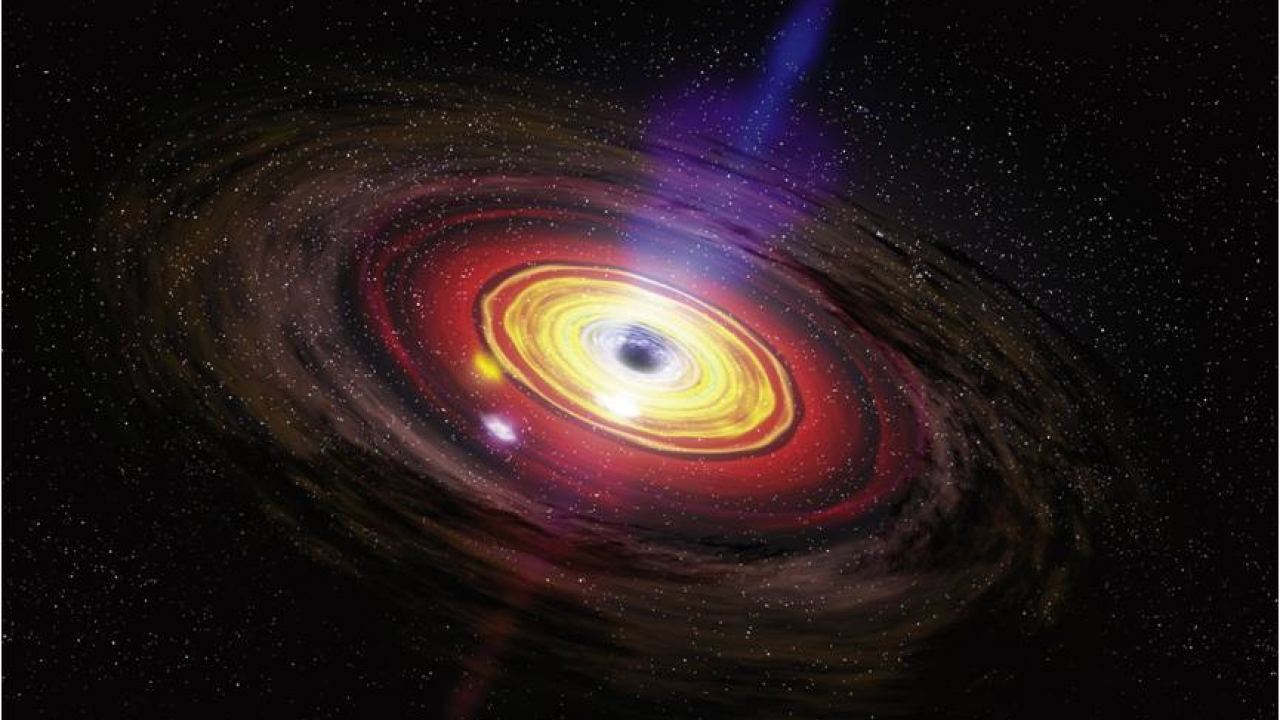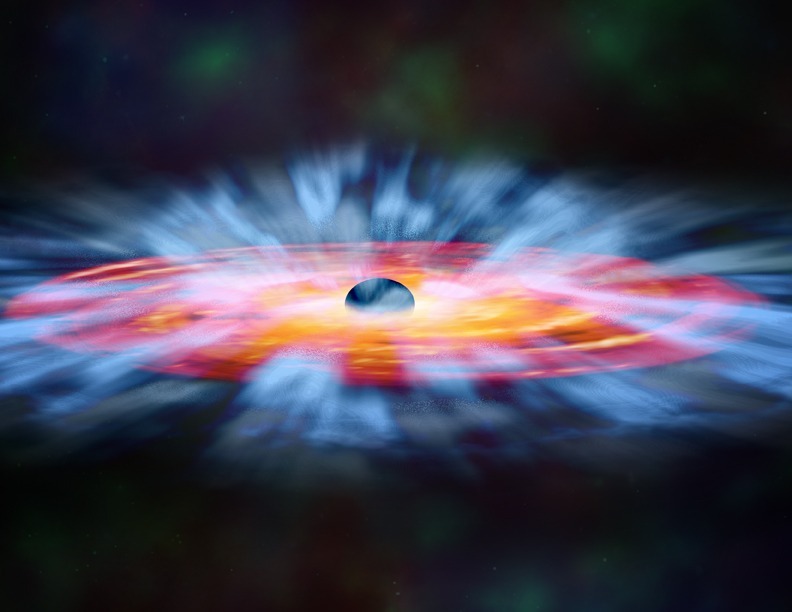Some of the oddest and most interesting objects in space are black holes. Because of their enormous density and powerful gravitational pull, not even light can elude them. Scientists believe that there may be well over 100 million black holes in the Milky Way.
While black holes also differ in size, scientists have discovered Active galactic nuclei or AGN for short. They are now known to be active supermassive black holes in the heart of galaxies that are emitting jets and winds based on a wealth of data.
These emissions of gas and dust are visible to telescopes in space and on the ground as light across the entire electromagnetic spectrum, from X-rays and visible light to infrared light and radio waves.
A small area at the center of some galaxies known as an active galactic nucleus (AGN) is far brighter than the star population alone can account for. The galaxy’s rest of the galaxy cannot compete with the core region’s radiation output, which is exceedingly bright. From radio waves to gamma rays, AGNs release radiation that spans the whole electromagnetic spectrum. The center supermassive black hole, which is a consuming material that approaches it too closely, is the source of this radiation. An “active galaxy” is a galaxy that is supporting an AGN.
As early as the first half of the 20th century, photographic surveys of nearby galaxies discovered several distinctive indications of AGN emission. These data had been collected despite the lack of a physical explanation of the AGN phenomenon. However, further developments in technology enabled more observations of the AGN.
Astronomer Edward Fath’s first spectroscopic finding of emission lines from the nuclei of NGC 1068 and Messier 81, which was reported in 1909, and Heber Curtis’s discovery of the jet in Messier 87 were two examples of early observations of the active galactic nuclei.
In 1943, Carl Seyfert published a paper in which he described observations of nearby galaxies with bright nuclei that were sources of unusually broad emission lines. Later spectroscopic studies by astronomers like Vesto Slipher, Milton Humason, and Nicholas Mayall noted the presence of unusual emission lines in some galaxy nuclei.
Hubble’s instruments have tracked numerous AGNs, including quasars, over the years. A quasar 9 billion light-years from Earth was the subject of Hubble’s 100000th exposure in 1996. The brightest quasar ever observed in the early Universe has also been found by Hubble.
Numerous galaxies have an extremely bright nucleus, which can sometimes be more luminous than the light from the surrounding galaxies. Many AGNs are significant emitters of X-rays, radio, ultraviolet, and optical radiation, making up a large portion of the energy output of non-thermal (non-stellar) AGNs.
Scientists revealed that AGN’s brightness can change over short durations—hours or days. This provides information on the energy method and indicates that the size of the source of light or energy must be on the order of light hours or light days, respectively.
In 2011, Hubble photographed the AGN at the center of the galaxy Markarian 509 which is 500 million light-years away from Earth. This galaxy’s AGN was chosen for study because it is well known that its brightness varies, a sign of turbulent matter flow.
The discoveries made by Hubble’s further research on AGNs have also shed light on the interactions between supermassive black holes and the host galaxies they inhabit. Observations revealed that IC 4870 and ESO 021-G004 are two galaxies with blazing AGNs in their cores that Hubble has captured in some of its most dazzling photos.
But how do scientists and researchers detect these supermassive black holes? Studies of the gas and dust that surround supermassive black holes are one reason why we know so much about active galactic nuclei which are likewise known as accretion disks.
The accretion disc is formed by cold material near a black hole in the traditional model of AGN. The accretion disc heats up as a result of dissipative processes in the disc that moves matter inward and angular momentum outward. An accretion disc’s anticipated spectra have peaks in the optical-ultraviolet waveband, and a corona of hot material that forms above it can inverse-Compton scatter photons with energies as high as X-rays. Cold atomic material nearby the black hole is excited by the radiation from the accretion disc and emits light at specific emission lines as a result.
In these continuously rotating accretion disks near black holes, particles occasionally collide and generate heat and light. Some of this debris is propelled into jets and winds by extremely powerful magnetic fields.
We now have a variety of information regarding nearby and distant active galactic nuclei. Infrared light enables us to see through the gas and dust obscuring the centers of galaxies, where all the action is occurring, for local targets, which is crucial for two reasons.
Light has been stretched for billions of years when it travels to Earth from faraway targets due to the expansion of space. High-resolution infrared data on galaxies in the universe, even though active galactic centers may generate ultraviolet and visible light and help monitor the activity occurring at the center of the galaxies.
Due to their enormous luminosity, active galaxies have long held the record for the highest-redshift objects observed in the optical or radio spectrum. They are still useful in research on the early cosmos, although it is now understood that an AGN presents a skewed view of the “average” high-redshift galaxy.
Radio-loud and radio-quiet AGN, which are the most luminous kinds of AGN, appear to have been significantly more prevalent in the early cosmos. This shows that huge black holes originated early on and that the conditions for the production of brilliant AGN, such as significantly higher availability of cold gas near the centers of galaxies than at present, were more prevalent in the early universe.
Astronomers have been able to amalgamate a number of distinct kinds of galaxies thanks to the identification of active galactic nuclei. They have also been able to comprehend how a galaxy’s size can be determined from the behavior in its center. Finally, the study and observations made on AGNs have helped astronomers comprehend which galaxies have merged in the past and what might happen to our own galaxy in the future.


